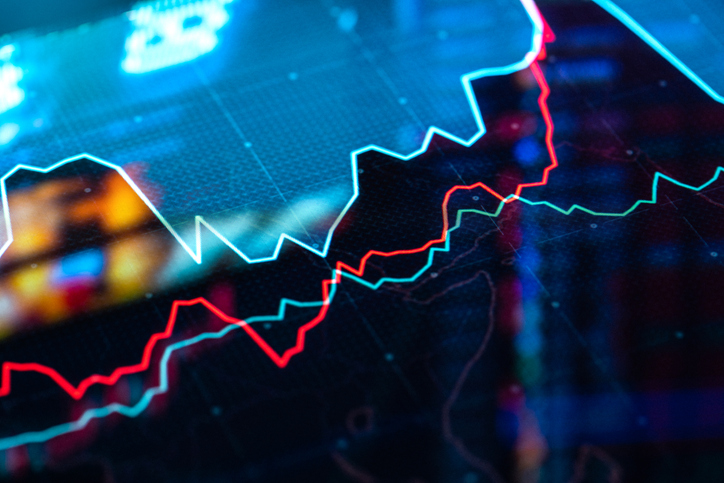The Four Best Investment Newsletters for Funds
All of my favorites have delivered superior risk-adjusted returns over the long haul.

Most investment newsletters are worthless. What’s worse, some are dangerous to your financial health. But a handful are first-rate. Thanks to the work of Mark Hulbert, editor of the Hulbert Financial Digest, who has been painstakingly tracking newsletter recommendations for 34 years, it’s possible to separate the gold from the dross.
Hulbert places a lot of weight on risk-adjusted returns of newsletters’ recommended portfolios. Risk-adjusted returns have more predictive value than raw returns, countless academic studies have shown. I discuss both raw and risk-adjusted returns below.
For this article, I’ve relied heavily on Hulbert’s rankings. But in picking the four best fund newsletters for you, the investor, I’ve also considered other factors. If a newsletter doesn’t give logical reasons for recommending some funds over others, you’re unlikely to stick with it. Similarly, you’re not likely to stay with a newsletter that’s hard to understand and whose recommendations are hard to implement. No-Load Mutual Fund Selections & Timing is Hulbert’s top performer over the past 10 and 15 years, but I find it difficult to follow.
From just $107.88 $24.99 for Kiplinger Personal Finance
Become a smarter, better informed investor. Subscribe from just $107.88 $24.99, plus get up to 4 Special Issues

Sign up for Kiplinger’s Free Newsletters
Profit and prosper with the best of expert advice on investing, taxes, retirement, personal finance and more - straight to your e-mail.
Profit and prosper with the best of expert advice - straight to your e-mail.
With that in mind, I list my four favorite letters below. All of the letters publish monthly, but they e-mail updates to their clients more frequently. The cost for a one-year subscription is listed, but be sure to check the letter’s Web site for specials. All returns are for the past 15 years through October 31, unless Hulbert doesn’t have data stretching back that far.
Fidelity Investor has returned an annualized 7.8% over the past 15 years, an average of 3.2 percentage points per year better than Standard & Poor’s 500-stock index. It ranks fourth among the 25 fund newsletters Hulbert has tracked that long and fourth on a risk-adjusted basis. The letter’s picks have, in aggregate, been about 15% less volatile than the S&P 500.
Editor Jim Lowell offers solid investment advice amid a sea of nautical metaphors. His five portfolios hold funds an average of 1½ years. Lowell wins special kudos for performing well even though he limits his picks to Fidelity funds, which have been only so-so performers in recent years. The letter costs $100 a year.
Dan Wiener, editor of the Independent Adviser for Vanguard Investors, has built his success largely by investing in—of all things—Vanguard’s actively managed funds. Vanguard’s low costs give him a huge advantage. But so does his fund selection, which includes a longtime overweight in health care stocks. As befits a newsletter that recommends Vanguard funds, Wiener eschews market timing and, on average, holds funds nearly four years. Over the past 15 years, the letter’s portfolios have returned an average of 7.2% annualized, beating the S&P 500 by 2.7 percentage points per year and doing so with 15% less volatility than the index. In terms of absolute returns, the letter ranks sixth on Hulbert’s list; on a risk-adjusted basis, it ranks fifth. The letter costs $100 annually.
Jim Stack’s InvesTech Research newsletter, whose motto is “safety first,” is no stranger to readers of this column. His mix of fundamental and technical indicators strikes me as well thought out. Thanks to some awesome market calls, InvesTech’s recommendations have returned an annualized 8.7% over the past 15 years--an average of 4.1 percentage points better than the S&P. Over those years, the letter ranks number three among the 25 fund letters Hulbert has followed that long. The letter’s recommendations have been one-third less volatile than the S&P index, helping propel InvesTech to the number-two ranking in Hulbert’s universe on a risk-adjusted basis. The letter mostly uses exchange-traded funds, which stay recommended for two years, on average. The letter costs $175 annually.
Morningstar Fund Investor draws on about 100 Morningstar analysts for its selections. Over the past five years, it has returned an annualized 11.2%, an average of 5.5 percentage points less than the S&P 500. But the letter has exhibited just two-thirds of the volatility of the index. On a risk-adjusted basis, it ranks number six among the 47 letters Hulbert has tracked for at least five years. It ranks number 16 based on raw returns.
Editor Russ Kinnel recently discontinued the letter’s model portfolios. Instead, the letter will continue to offer its analysts’ gold-rated funds—an approach that has produced market-beating returns.
If you decide to subscribe to a newsletter, resolve to stick with it for at least two or three years. Any newsletter can have a bad year, and short-term returns aren’t predictive of anything.
Steve Goldberg is an investment adviser in the Washington, D.C., area.
Profit and prosper with the best of Kiplinger's advice on investing, taxes, retirement, personal finance and much more. Delivered daily. Enter your email in the box and click Sign Me Up.

-
 5 Types of Gifts the IRS Won’t Tax: Even If They’re Big
5 Types of Gifts the IRS Won’t Tax: Even If They’re BigGift Tax Several categories of gifts don’t count toward annual gift tax limits. Here's what you need to know.
-
 The 'Scrooge' Strategy: How to Turn Your Old Junk Into a Tax Deduction
The 'Scrooge' Strategy: How to Turn Your Old Junk Into a Tax DeductionTax Deductions We break down the IRS rules for non-cash charitable contributions. Plus, here's a handy checklist before you donate to charity this year.
-
 IRS Says You Made a Tax Return Mistake? A New Law Could Help You Fight Back
IRS Says You Made a Tax Return Mistake? A New Law Could Help You Fight BackTax Law Updated taxpayer protections change what the IRS must explain on error notices and how long you have to respond.
-
 Dow Rises 497 Points on December Rate Cut: Stock Market Today
Dow Rises 497 Points on December Rate Cut: Stock Market TodayThe basic questions for market participants and policymakers remain the same after a widely expected Fed rate cut.
-
 JPMorgan's Drop Drags on the Dow: Stock Market Today
JPMorgan's Drop Drags on the Dow: Stock Market TodaySmall-cap stocks outperformed Tuesday on expectations that the Fed will cut interest rates on Wednesday.
-
 Stocks Slip to Start Fed Week: Stock Market Today
Stocks Slip to Start Fed Week: Stock Market TodayWhile a rate cut is widely expected this week, uncertainty is building around the Fed's future plans for monetary policy.
-
 Stocks Keep Climbing as Fed Meeting Nears: Stock Market Today
Stocks Keep Climbing as Fed Meeting Nears: Stock Market TodayA stale inflation report and improving consumer sentiment did little to shift expectations for a rate cut next week.
-
 Small Caps Hit a New High on Rate-Cut Hope: Stock Market Today
Small Caps Hit a New High on Rate-Cut Hope: Stock Market TodayOdds for a December rate cut remain high after the latest batch of jobs data, which helped the Russell 2000 outperform today.
-
 UNH Sparks a 408-Point Surge for the Dow: Stock Market Today
UNH Sparks a 408-Point Surge for the Dow: Stock Market TodayThe best available data right now confirm both a slowing employment market and a December rate cut, a tension reflected at the equity index level.
-
 Stocks Bounce Back With Tech-Led Gains: Stock Market Today
Stocks Bounce Back With Tech-Led Gains: Stock Market TodayEarnings and guidance from tech stocks and an old-school industrial lifted all three main U.S. equity indexes back into positive territory.
-
 Dow Slides 427 Points to Open December: Stock Market Today
Dow Slides 427 Points to Open December: Stock Market TodayThe final month of 2025 begins on a negative note after stocks ended November with a startling rally.